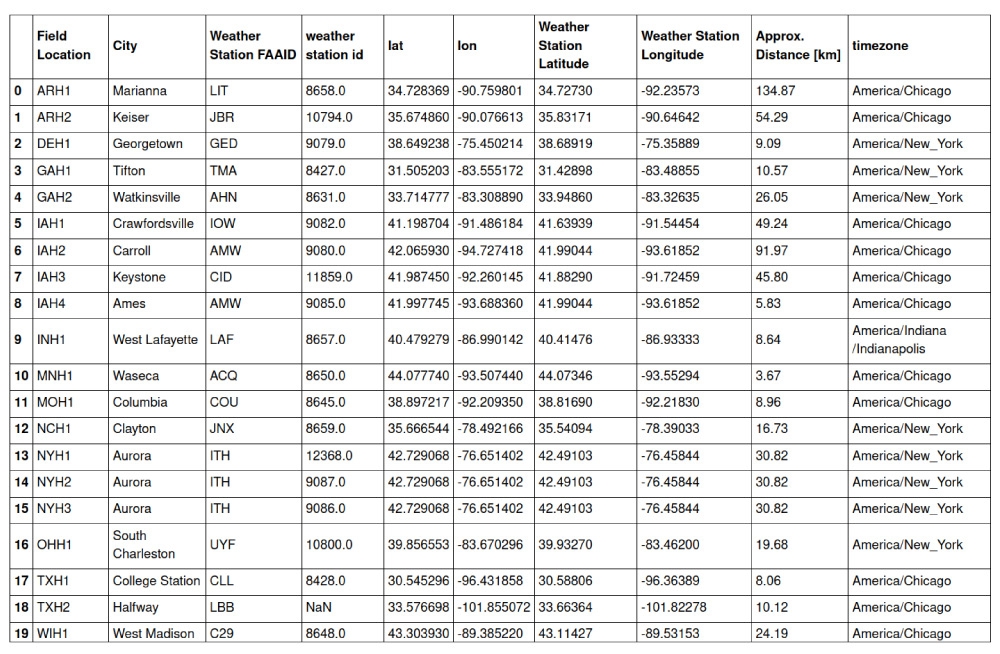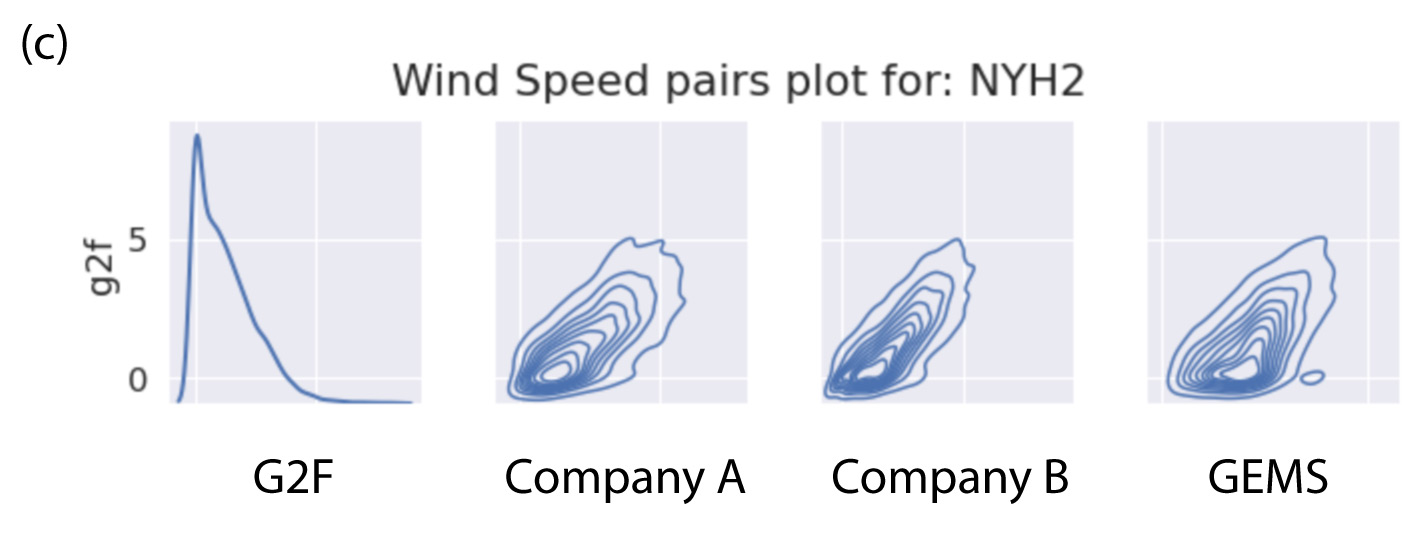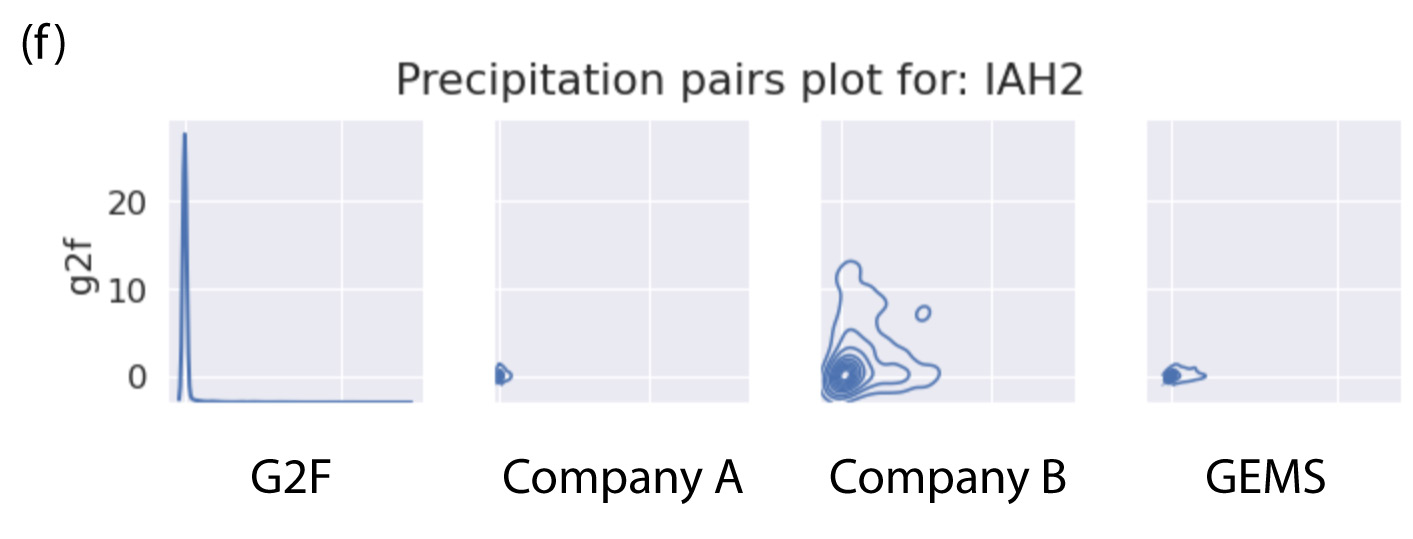
Impact and partners
GEMS served as the primary data management group for Genomes2Fields (G2F), a consortium of US and Canadian university corn breeding programs. G2F began coordinating efforts in 2014, collecting data in a standardized fashion and growing a common set of "checks" within their field studies. All data are publicly released two years after they are gathered, giving the consortium a chance to process and publish results in advance of public release.
Process and problem solved
Weather is such a critical input for agricultural modeling and planning. We sought to determine if the available weather variables were sufficiently accurate for agricultural applications, especially when far away from NOAA weather station sites. So we created correlation plots from G2F local weather stations across the rural US, and identified the comparative accuracy of alternative commercial weather products.
GEMS Services Used
Table1. Characteristics of the 20 G2F Project Weather Stations used as “Ground truth” for this study. The second to last column indicates the distance to the nearest NOAA Weather Station.

Figure 1. Correlation plot of G2F weather variables vs three weather providers. For each variable, there are 4 panels. The first displays a distribution plot of G2F values. The remaining 3 panels show Company A, Company B, and GEMS Weather. Prices are based on combined historical and forecasted plans.






How accurate is the weather for agriculture?
As the primary data management group for Genomes2Fields (G2F), we classified 2018 data from 20 identical project weather stations (Table 1) as “ground truth”, and compared that to the data sourced from GEMS and two additional commercial weather data providers. Although we utilized many analytical plot types and summary statistics, the results were consistent. A selection of representative kernel correlation plots are shown in Figure 1 (a)-(f).
Results
- Price is not a good predictor of weather product accuracy.
- All company weather products performed reasonably well for temperature, pressure, and dew point.
- Solar radiation is accurate for some suppliers and completely off for others.
- Wind speed, wind direction, and precipitation are all universally poor far away from an NOAA station, though some over- and under-predict rain considerably worse than others.
